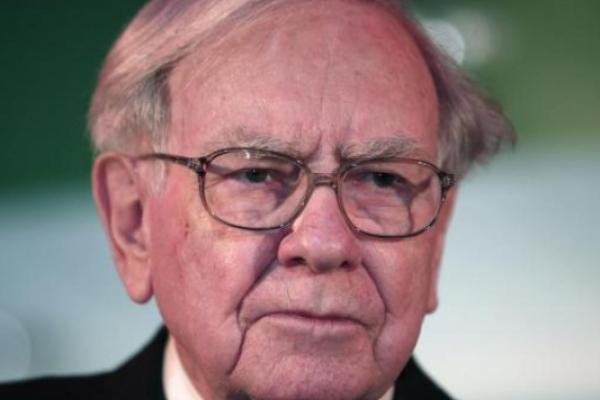IBM According To Warren Buffett s Annual Letters To Shareholders International Business Machines
Post on: 13 Апрель, 2015 No Comment

Summary
- IBM meets Buffett’s strictest test for economic excellence, a Fortune Return on Equity study he cited in his 1987 letter.
- Buffett’s IBM purchase price was
10x Pre-Tax earnings, a price guideline he has adhered to in several past purchases, as summarized in my article.
Warren Buffett and IBM
Face up to two unpleasant facts: the future is never clear and you pay a very high price for a cheery consensus. Uncertainty is the friend of the buyer of long-term values.
— Warren Buffett; CEO of Berkshire Hathaway (NYSE: BRK.A )(NYSE: BRK.B ) Forbes Magazine Article
The other thing I would say about IBM, too, is that a few years back they had 240 million options outstanding, now they are down to about 30 million. They treat their stock with reverence, which I find is unusual among big companies. Or they really. they really are thinking about the shareholder.
— Warren Buffett, CNBC November 14, 2011
The investing media and individual investors are consistently asking the question: What could Warren Buffett possibly see in a company like IBM? And instead of studying Buffett’s annual reports or looking at past acquisitions he has made for clues, the investing media seems to just give up on doing any research and concludes that the IBM purchase is some type of rare anomaly from a bad Warren Buffett Coca-Cola bender.
In reality, the IBM acquisition is Classic Buffett, as Charlie Munger stated (Of Permanent Value, Volume 1 of 3 ). and I’ll explain why the IBM acquisition is classic Buffett in using Buffett’s yardsticks for return on capital, purchase price, capital allocation, and management quality as discussed in his letters to shareholders and at the annual meetings in Omaha. In addition, I will examine current investor and analyst sentiment on IBM and see if the company presents an opportunity in terms of some of the behavioral investing parameters emphasized by Buffett over the years.
Buffett Metric #1: Return on Equity and Return on Invested Capital — 1987 Fortune Magazine Study
The Fortune study I mentioned earlier supports our view. Only 25 of the 1,000 companies met two tests of economic excellence — an average return on equity of over 20% in the ten years, 1977 through 1986, and no year worse than 15%. These business superstars were also stock market superstars: During the decade, 24 of 25 outperformed the S&P 500.
— Warren Buffett; 1987 Letter to Shareholders
Over the long term, it’s hard for a stock to earn a much better return that the business which underlies it earns. If the business earns six percent on capital over forty years, you’re not going to make that much different than a six percent return — even if you originally buy it at a huge discount. Conversely, if a business earns eighteen percent on capital over twenty or thirty years, even if you pay an expensive looking price, you’ll end up with one hell of a result.
— Charlie Munger ; Vice President; Berkshire Hathaway (BRK.A, BRK.B)
Both Warren Buffett and his partner Charlie Munger have stressed the importance of returns on capital earned by a company, especially a company a potential investor is looking at for investment purposes over a long period of time. High returns on capital are also the single best indicator of a company with a wide business moat or significant competitive advantage according to Buffett and that is the type of company Buffett and Munger covet most since their shift to purchasing high-quality businesses with the acquisition of See’s Candies in 1972 for $25 million.
In his 1987 Berkshire Hathaway letter to shareholders. Warren Buffett described the ultimate test of economic excellence for a company and its management. In the letter Buffett mentioned a Fortune magazine study documented in their 1987 annual investment issue regarding long-term returns on equity experienced by the 1,000 largest companies in the previous 10-year period.
The requirements of the test were so difficult that only 2.5% of the largest 1,000 companies passed the test. The test contained two simple criteria: 1) an average return on equity of 20% per year for the previous 10 years, and 2) No single year in the ten-year period where return on equity was below 15%. When looking at prospective investments, I often see how the company measures up according to this very difficult test, and few pass it. Based on my past research, I know that longtime Buffett protg Ted Weschler favorite Davita (NYSE:DVA ) passes the test, but it would be interesting to see how other Berkshire investments measure up, particularly IBM.
IBM’s long-term financials on the Value Line Investment Survey website show that the company has consistently been able to earn extremely high returns on equity and on invested capital. In fact, as of 12/31/13, IBM’s return on equity is good enough to pass the Fortune test of economic excellence mentioned above. For the 10-year period ended 12/31/2013, IBM’s average return on equity was 59.7% (significantly above 20% hurdle) and there was no individual year where return on equity was less than 15%.
Incredibly, IBM’s return on invested capital actually passes the test as well. For the 10-year period ending 12/31/13, average return on total capital was 29.7% (9.7% over 20% hurdle) and no individual year was below 15%. Considering the statistics Buffett mentioned (25 out of 1,000 passed), this was an incredible achievement for IBM, considering only 2.5% of the largest 1,000 companies are typically able to pass both tests in a given year. The numbers from Value Line Investment Survey are shown in the table below:
IBM Return on Equity and Return on Invested Capital 2004-2013














